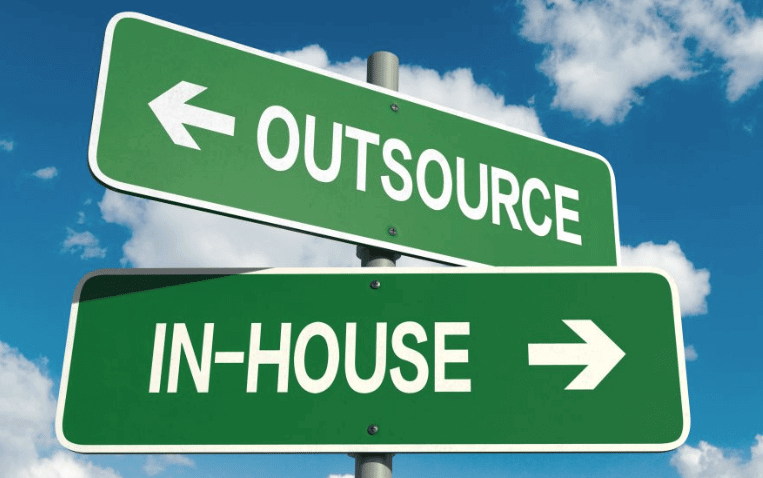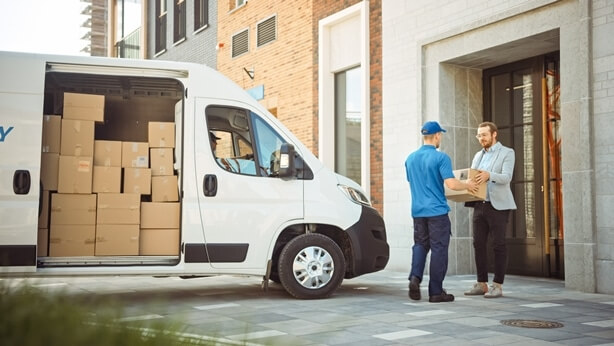
Key Takeaways
- When the economy tightens, cutting outbound is a mistake—79% of B2B tech companies already felt revenue pain in 2023, yet 73% planned to increase marketing budgets in 2024, not slash them. 10Fold
- Specialized B2B lead generation partners can cut your SDR/BDR cost base by roughly 40-60% versus building the same capability in-house, while speeding up ramp time and preserving cash for closing roles and product. Artemis Leads SalesHive
- Lead generation and prospecting are now the #1 pain point for nearly 70% of B2B sales professionals, and organic channels are down 47% in 2025—making dedicated outbound specialists more critical than ever. Funnl.ai Neil Patel
- During downturns, companies that maintain or sharpen commercial investment (sales, marketing, and lead gen) materially outperform peers over the next decade-sometimes 3x in enterprise value-rather than just cutting to the bone. Bain & Company McKinsey
- A fully loaded in-house SDR often runs $110K–$150K/year once you factor salary, tools, management, and ramp-making mis-hires and churn brutally expensive compared with a month-to-month specialist program. SalesHive
- B2B lead generation specialists bring proven playbooks, data, and tech (AI personalization, multichannel outreach) that most internal teams can't justify building from scratch-especially when budgets and headcount are frozen.
- Bottom line: in a lousy economy, plugging in a B2B lead generation specialist is often the smartest way to protect pipeline, control CAC, and give your closers a fighting chance while competitors are going dark.
When the economy tightens, pipeline stops being optional
When the market is healthy, inbound can hide a lot of sins—soft targeting, inconsistent follow-up, and “good enough” prospecting. When the economy turns, those sins show up fast: budgets freeze, approvals multiply, and sales cycles stretch. That’s why B2B lead generation specialists often become the most pragmatic investment you can make when the economy sucks.
In 2025, outbound isn’t a “nice-to-have” layer on top of inbound; it’s a stabilizer for revenue planning. Organic channels have been squeezed hard, with one analysis showing a 47% drop in organic B2B leads from January to October 2025 as search experiences and SERPs shift. At the same time, a survey of 500+ B2B sales pros found 69.6% say lead generation and prospecting is their single biggest challenge—making pipeline creation a board-level problem, not a rep-level inconvenience.
The playbook in a downturn isn’t to “wait it out.” It’s to build a repeatable outbound engine—cold email, calling, LinkedIn, and tight list building—that keeps qualified conversations flowing even as inbound becomes less predictable. That’s exactly where a strong sdr agency, outbound sales agency, or cold email agency earns its keep: predictable activity, measurable outcomes, and faster iteration than most teams can pull off internally.
Why cutting outbound is the fastest path to a revenue cliff
The most common downturn mistake we see is slashing lead gen first because it’s easier than cutting product or closing roles. It might protect short-term margins, but it quietly guarantees a pipeline gap 2–4 quarters later—right when you need momentum the most. In practice, you don’t “save money” by turning off outbound; you just delay the cost and make it harder to recover.
The data is blunt: during the 2023 downturn, 79% of B2B technology companies reported a moderate to severe revenue impact, yet 73% planned to increase marketing budgets in 2024. Leading teams didn’t go dark—they got more accountable about ROI and doubled down on channels they could measure, including outbound and sales development.
Strategic research backs the same conclusion. Bain and McKinsey have both shown that companies that protect commercial investment through downturns materially outperform peers over the following decade, while indiscriminate cuts tend to lock in long-term underperformance. The “smart” move isn’t spending more everywhere; it’s maintaining a focused revenue engine while competitors hesitate.
The economics: in-house SDR hiring vs. sales outsourcing
When cash is tight, your CFO isn’t asking whether outbound is important—they’re asking whether it’s efficient. That’s where the fully loaded cost of in-house SDRs becomes the sticking point. Our analysis at SalesHive pegs a single in-house SDR at roughly $110K–$150K per year once you include salary, tools, management time, and ramp, which is often 2–3x the “OTE line item” leadership sees on a spreadsheet.
Specialists change the cost structure because you’re not buying one person—you’re buying an operating system: process, QA, coaching, deliverability, sequencing, dialer workflows, and list building services. Benchmarks commonly show 40–60% cost reductions when you outsource sales development compared to building an equivalent in-house SDR engine, and Deloitte-cited research points to up to 40% savings from outsourcing sales operations versus doing everything internally.
| Cost & speed factor | In-house SDR team | Lead gen specialist / outsourced SDR team |
|---|---|---|
| Fully loaded annual cost (per SDR) | $110K–$150K plus management overhead | Often packaged in a monthly program fee with tools/management included |
| Time to ramp | Commonly 3–6 months to consistent output | Often 2–4 weeks to launch and iterate |
| Flexibility | Headcount risk (hiring freezes, churn, severance) | Month-to-month scaling without internal restructuring |
| Operational burden | Enablement, QA, tooling, data hygiene owned internally | Shared playbooks, QA, and process owned by the specialist partner |
This is why sales outsourcing is often the “least-worst” option in a downturn: it converts fixed costs into a flexible operating expense while keeping pipeline alive. If you’re comparing a b2b sales agency or sdr agencies, treat the decision like CAC optimization—cost-per-qualified-meeting, opportunity rate, and sourced pipeline—not like a staffing workaround.
How to implement a specialist program without wasting your first 30 days
Most outsourced sales team programs fail for one reason: the client expects the agency to “figure it out” with minimal context. The fix is to treat implementation like revenue infrastructure. Start by mapping the last 12 months of closed-won deals back to source, then compare cost-per-opportunity across inbound, outbound, partners, events, and paid; anything with weak economics becomes budget you can reallocate into accountable prospecting.
Next, build a downturn-proof ICP that reflects who is still buying right now, not who looked good last year. Define firmographics, target roles, must-have pains, disqualifiers, and acceptable deal size—and then decide what “qualified” means in plain language so AEs don’t reject meetings by vibe. This is also where strong data hygiene matters: verified contacts, decision-maker coverage, and ongoing enrichment should be part of scope, not an afterthought.
Finally, run a 90-day pilot with weekly reviews and clear success metrics: qualified meetings, show rate, meeting-to-opportunity conversion, and sourced pipeline. Require CRM logging for every touch so attribution is clean and budgeting stays evidence-based. If you’re engaging a cold calling agency or cold calling services partner, align SLAs for speed-to-lead and follow-up so your reps don’t waste the calendar your cold callers create.
In a downturn, the goal isn’t more activity—it’s more accountability: tighter targeting, cleaner data, and qualified conversations you can tie directly to pipeline.
Best practices: getting “extension of the team” quality from specialists
Outsourcing doesn’t have to mean losing message control, but it will if you treat your partner like a black box. The highest-performing programs co-create positioning, objections, and talk tracks, then review call recordings and email replies the same way you’d coach internal reps. Whether you’re working with a cold email agency, b2b cold calling services provider, or a full sales development agency, insist on transparent reporting and shared iteration.
Channel mix should match buyer reality, not preference. Cold email creates scalable coverage, LinkedIn adds credibility and context, and a cold calling team converts “maybe later” into real conversations—especially when committees are bigger and inboxes are crowded. We typically see the best results when phone and email reinforce each other rather than competing, which is why many teams choose a combined b2b sales outsourcing approach over a single-channel vendor.
Set incentives around outcomes, not busyness. If you measure specialists only on dials and sends, you’ll get volume and brand damage; if you measure qualified meetings, opportunity rate, and sourced pipeline, you’ll get discipline. This matters even more when trust is fragile and buyers are risk-averse—your outbound has to feel helpful, specific, and relevant, not noisy.
Common mistakes (and how to avoid them) when you outsource sales development
Mistake one is cutting outbound the moment the forecast slips. It feels conservative, but it usually creates a revenue cliff later—and it often hands market share to competitors who keep prospecting while you pause. A better approach is to trim vanity spend and double down on accountable lead generation where you can see cost-per-meeting and opportunity creation clearly.
Mistake two is trying to build a full in-house SDR engine under a hiring freeze. You end up with partial hires, fragmented tooling, and long ramp times, and your AEs still don’t get consistent meetings. If you need to hire SDRs later, fine—but using a specialist first is often the fastest way to cover the gap without burning runway.
Mistake three is ignoring list quality because “the agency will handle it.” Bad data creates bounces, wasted dials, and missed decision-makers, and those costs compound when budgets are tight. Make list building services, verification, and ongoing enrichment contractual deliverables, and ensure every record syncs into your CRM so the program improves your database instead of living outside it.
How to optimize ROI: the metrics that actually predict revenue
If you want ROI you can defend in a budget review, start with cost-per-qualified-meeting—but don’t stop there. Track meeting-to-opportunity and opportunity-to-close by source, then attach average deal size and cycle length to estimate sourced pipeline and revenue influence. This keeps you from overvaluing channels that look “busy” but don’t convert.
Also watch quality indicators that show whether the market is responding: reply sentiment, show rate, and the percentage of meetings that match your ICP and pain criteria. If those dip, the answer is rarely “more volume.” It’s usually tighter targeting, better data, improved offers, and messaging that addresses CFO concerns like risk reduction, consolidation, and payback period.
Operational alignment is an underrated lever. Define AE follow-up SLAs, confirm how pipeline credit works, and make sure reps treat specialist-sourced meetings like gold, not “extra.” If you’re testing pay per appointment lead generation or pay per meeting lead generation, quality control matters even more—because the fastest way to waste spend is to accept low-intent meetings that your team doesn’t convert.
Next steps: build a downturn-resilient outbound engine you can scale
The most reliable way to survive a tough economy is to keep your pipeline math honest: coverage, conversion rates, and time-to-close. If your coverage drops below roughly 3–4x your new business target, your reps are spending less than half their time selling, or inbound is flat despite effort, you’re already in the danger zone. That’s usually the signal to bring in specialists rather than hoping conditions improve on their own.
A solid specialist partner should bring playbooks, multichannel execution, and the tech to personalize at scale—without turning your brand into spam. At SalesHive, we’ve booked 100,000+ B2B meetings for 1,500+ clients since 2016, and we’ve seen the same pattern repeatedly: the companies that keep their outbound engine running through uncertainty exit downturns with more predictable growth and more confidence in their numbers.
If you want a practical starting point, pressure-test your current mix, define a tight ICP, and pilot one segment with weekly reviews and CRM-level attribution. Whether you choose a cold calling company, a b2b sales agency, or a hybrid model with internal SDRs plus an outsourced SDR pod, the goal is the same: protect pipeline, control CAC, and give your closers enough at-bats to win even when the economy sucks.
Sources
📊 Key Statistics
Common Mistakes to Avoid
Slashing outbound and lead gen budgets at the first sign of a slowdown
You might protect short-term margins but starve your future pipeline right when competitors are weakest, leading to a revenue cliff 2-4 quarters later.
Instead: Trim vanity spend and non-performing channels, then double down on accountable lead generation-often via specialists who can show clear cost-per-meeting and opportunity creation metrics.
Trying to build a full in-house SDR engine while under a hiring freeze
You burn precious runway on partial hires, underpowered tooling, and long ramp times, and you still don't get consistent meetings in front of your AEs.
Instead: Use a B2B lead generation specialist or outsourced SDR team to plug the capacity gap with month-to-month flexibility, then bring pieces in-house later if and when it makes sense.
Treating outsourced lead gen as a black box
If you just 'throw it over the wall' to an agency, you'll end up with misaligned messaging, low-quality meetings, and frustrated reps who stop attending them.
Instead: Treat specialists like an extension of your team: co-build the ICP and messaging, give them CRM access, invite them to pipeline reviews, and hold both sides accountable for meeting quality.
Measuring specialists only on activity, not revenue impact
You'll incentivize spammy volume and low-intent leads that clog your funnel and erode your brand when buyers are already skeptical.
Instead: Set KPIs around qualified meetings, opportunity rate, and sourced pipeline; keep an eye on reply quality and show rates so you're scaling what truly drives revenue.
Ignoring data hygiene and list quality because 'the agency will handle it'
Bad data means bounced emails, wasted dials, and missed decision makers-problems that multiply when budgets are tight.
Instead: Make clean data part of your specialist's scope: verified contacts, firmographic filters, and ongoing enrichment tied to your CRM so your lists actually match your ICP.
Action Items
Audit your current lead generation mix against pipeline targets
Map last 12 months of closed-won deals back to source (inbound, outbound, partner, events) and calculate cost-per-opportunity. Any channel with poor economics or no clear attribution is a candidate to reallocate into specialist-run outbound.
Build a lean business case for outsourcing SDR/BDR work
Estimate fully loaded SDR costs (salary, benefits, tools, management, ramp) versus a flat monthly specialist fee, and compare cost-per-meeting and time-to-first-meeting. Present this to your CFO as a CAC optimization, not just a headcount workaround.
Define a tight, downturn-proof ICP and qualification criteria
Work with sales, CS, and finance to identify which customers are still buying in this economy, then codify firmographics, personas, must-have pains, and deal-breakers. Hand this playbook to your lead gen specialist as the non-negotiable roadmap.
Pilot a 90-day specialist program with clear success metrics
Pick one or two priority segments, set targets for qualified meetings, opportunity rate, and sourced pipeline, and review weekly with your partner. If the math works, scale; if not, adjust ICP, messaging, or channel mix-not just volume.
Integrate specialist activity directly into your CRM and reporting
Require that every contact, sequence, and meeting is logged in your CRM with proper attribution so you can compare specialist-sourced pipeline against other channels and make budgeting decisions with real data.
Align AE expectations and compensation with specialist-generated pipeline
Make sure AEs understand qualification criteria, SLAs for follow-up, and how they're credited on deals sourced by specialists. Time-killed or neglected meetings are the fastest way to waste your outbound spend.
Partner with SalesHive
Over the last several years, SalesHive has booked 100,000+ sales meetings for more than 1,500 B2B clients by combining human expertise with an AI-powered sales platform and eMod, its proprietary AI email personalization engine. The team handles the heavy lifting: ICP research, list building, messaging, AI-personalized cold email, high-volume phone outreach, and appointment setting-with risk-free onboarding and month-to-month flexibility, not annual contracts.
For revenue leaders staring down a shaky economy, that means you can convert a big, fixed SDR cost into a flexible operating expense while still giving your AEs a full calendar of qualified conversations. Whether you need a single SDR pod or a fully outsourced global team, SalesHive lets you keep your internal focus on discovery, demos, and closing while they keep the top of your funnel flowing.
❓ Frequently Asked Questions
What exactly does a B2B lead generation specialist do during an economic downturn?
A B2B lead generation specialist focuses on building and executing outbound programs-cold email, cold calling, LinkedIn, and list building-to keep qualified opportunities flowing when inbound slows. In a downturn, they tighten ICPs, refine messaging to address budget and risk concerns, and prioritize accounts most likely to buy. Instead of your team guessing who to reach out to and how, specialists run a disciplined, data-backed cadence that fills your AEs' calendars with the right conversations.
Why are lead generation specialists more cost-effective than hiring SDRs in-house?
By the time you add salary, benefits, tech stack, management, and 3-6 months of ramp, a single SDR can easily cost $110K–$150K per year, and their productivity is fragile if they churn. Specialists spread tooling, management, and training across many clients, so you pay a flat fee for a fully functioning engine instead of building everything yourself. Benchmarks show outsourcing sales and lead gen can cut costs by 40-60% while giving you faster time-to-value and less operational drag.
Won't outsourcing lead generation hurt our brand or message control?
It can-if you treat the provider like a boiler-room vendor instead of a strategic partner. The fix is to co-create a messaging playbook, review scripts and email templates, and require that SDRs are trained on your positioning, product, and competitive landscape. Strong B2B lead gen specialists are used to this; they expect to sound like an extension of your team and will gladly iterate messaging with your marketing and sales leaders.
How do I know if now is the right time to bring in a lead generation specialist?
Look at three signals: (1) pipeline coverage has dipped below 3-4x your new business target, (2) your reps are spending less than half their time actually selling because they're stuck prospecting, and (3) your inbound/organic volume is down or flat despite more content or paid spend. If two of those are true-and you're facing budget or headcount constraints-it's usually time to plug in a specialist rather than hoping conditions magically improve.
What should I look for when evaluating B2B lead generation agencies or outsourced SDR teams?
Prioritize proof over promises: ask for case studies with meetings booked, show rates, and pipeline generated in companies similar to yours. Dig into their list-building process, tech stack (AI personalization, dialer, CRM integrations), and how they define a qualified meeting. Finally, look at their engagement model-month-to-month, clear SLAs, and transparent reporting are signs they're confident in their ability to perform even in a tough economy.
How long does it take for a lead generation specialist to start producing results?
Good programs typically spend 2-4 weeks on onboarding: ICP definition, messaging, list building, and systems integration. From there, you should see initial meetings within the first 30 days and more predictable volume by 60-90 days as sequences are optimized. Compared with the 3-6 months it often takes an in-house SDR to fully ramp, that speed can be the difference between hitting and missing your quarterly number when the market is tight.
How do we measure ROI on outsourced lead generation in a B2B context?
Start with cost-per-qualified-meeting (CPM), then track meeting-to-opportunity and opportunity-to-close rates by source. Attach average deal size and sales cycle length to compute pipeline sourced and revenue influenced. In a downturn, you'll also want to look at payback period on your monthly specialist fee and compare it against other channels like paid media, events, or additional AE headcount.
Should we replace our internal SDR team with specialists, or run a hybrid model?
In most B2B orgs, a hybrid model wins. Keep strategic pieces and feedback loops close to home-like key account outreach or high-touch ABM-while using specialists to handle high-volume prospecting, list building, and coverage in new markets. Over time, you can shift work between internal and external teams as your strategy, budgets, and markets evolve.






